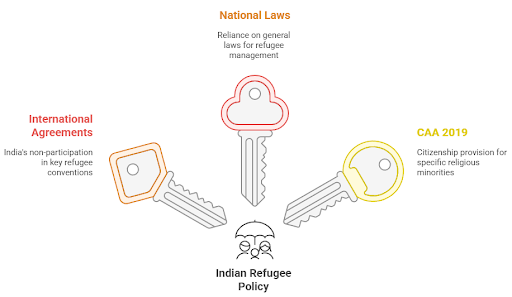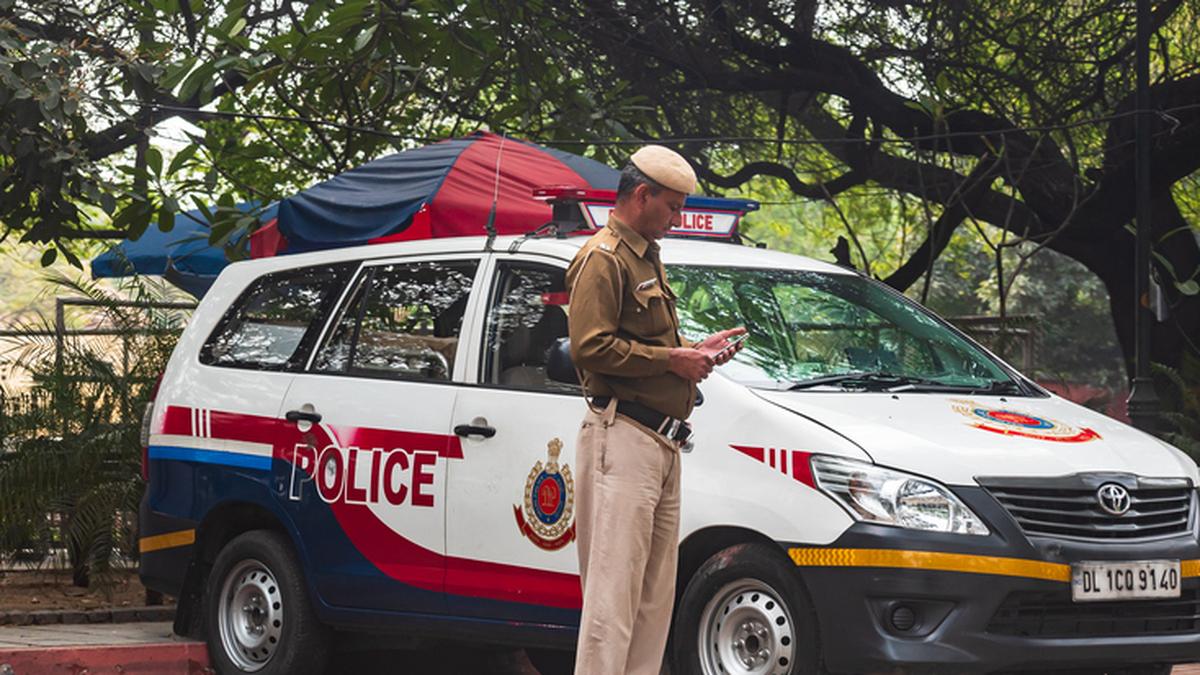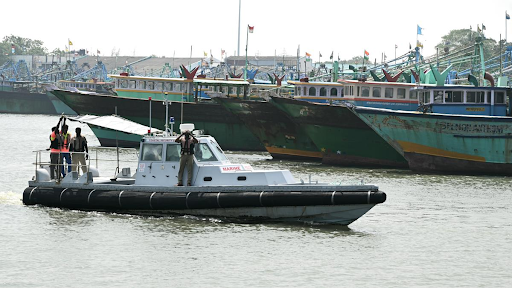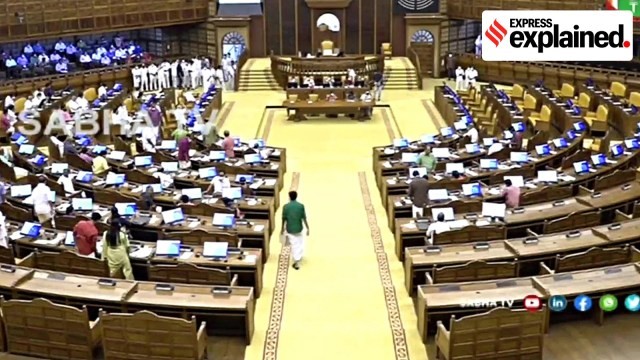



India’s refugee dilemma reflects a tension between humanitarian traditions and national security concerns. Without a formal refugee law, policies are ad-hoc, with selective treatment, as seen in the CAA and Rohingya securitization. This raises debates on India’s commitment to equality, secularism, and its role in upholding international human rights.
Copyright infringement not intended
Picture Courtesy:
India’s selective and inconsistent refugee policies, without a comprehensive legal framework, risk unfair treatment of genuine refugees.
|
Read all about: INDIA LACKS A REFUGEE POLICY, HANDLES CASES DISCRETIONARILY |
A refugee crisis in India is triggered by a large-scale, sudden influx of people from neighboring countries due to specific events. The causes are multifaceted:

The absence of a formal refugee law creates a fundamental ambiguity: how does one objectively distinguish a genuine refugee, fleeing for their life, from an "infiltrator" or illegal migrant?
India does not legally define "refugee." Until March 2025, various pre-Independence laws like the Foreigners Act, 1946, and the Passport (Entry into India) Act, 1920, were applied to all foreign nationals, including asylum seekers.
From April 2025, these were streamlined into the Immigration and Foreigners Act. However, without a refugee policy document, a genuine asylum seeker can be categorized as an "illegal migrant" or "infiltrator" under the Citizenship Act, 1955, risking harassment.
National Security Concerns
Cross-Border Infiltration
Illegal Rohingya infiltration from Bangladesh and Myanmar via porous borders, particularly in Tripura and Assam, is a significant concern. The MHA highlighted this in 2023, leading to increased eastern border fencing and surveillance.
Alleged Terrorism Links
States worry about refugees potentially linked to terrorist groups, which complicates humanitarian aid. For example, the Centre cited alleged Rohingya links to terrorism when advocating their deportation, citing internal security threats.
Blurring Lines with Illegal Migrants
Without a clear refugee law, differentiating true asylum seekers from economic migrants or those with hidden agendas is difficult, posing national security risks. The 2019 Assam NRC, which excluded 1.9 million, revealed the scale of undocumented residents.
Humanitarian Obligations
Shelter and Integration
India has historically welcomed groups like Tibetans and Sri Lankan Tamils, providing refuge, land, education, and integration, often through government-supported settlements.
Emergency Humanitarian Support
India provided humanitarian assistance during crises, exemplified by granting e-visas to Afghan Sikhs and Hindus after the 2021 Taliban takeover, facilitating their safe passage and access to education and work.
United Nations High Commissioner for Refugees (UNHCR) Engagement
India permits UNHCR to register and aid urban refugees, including Rohingya and Afghans. As of 2024, UNHCR India had approximately 2.4 lakh registered refugees. (Source: UNHCR)
|
Why Has India Not Signed the 1951 Refugee Convention? India’s decision to stay outside the international refugee framework is based on several long-standing arguments:
|
The ad-hoc nature of India's policy leads to several critical shortcomings:
|
Legislative Controversies: The Citizenship (Amendment) Act, 2019
|
India must transition from its ad-hoc, security-first stance to a rights-based refugee framework rooted in humanitarian values and regional cooperation.
Enact Comprehensive Refugee Law
Parliament should enact a comprehensive national refugee law. The National Human Rights Commission (NHRC) Model Law provides a blueprint, proposing clear definitions for refugees, asylum procedures, non-refoulement protection, and access to basic services.
Implement Refugee Identification System
Create a transparent, secure biometric ID system for refugees to balance welfare access with national security, enabling better tracking and essential service provision. MHA advised biometric ID registration in 2019.
Strengthen Community Integration Initiatives
Vocational training and SHG models helped Sri Lankan Tamil women in Tamil Nadu achieve economic stability. Invest in similar programs for long-term refugees to reduce marginalization.
Forge Regional Refugee Coordination
Advocate for a South Asian regional approach to refugee management. India could revive SAARC protocols or establish new mechanisms with Bangladesh and Myanmar for joint verification and repatriation plans, ensuring shared responsibility and sustainable solutions.
Re-affirm Non-Refoulement
Even without signing the 1951 Convention, India must consistently and unequivocally uphold the principle of non-refoulement as a humanitarian imperative.
Adopting International Best Practices
The European Union's Common European Asylum System (CEAS), despite its challenges, provides a framework for member states to apply common standards for processing asylum applications.
Despite a history of humanitarianism, India lacks a consistent refugee policy. A formal law, improved identification, and regional cooperation are needed to create a humane, secure system consistent with its democratic values.
Source: THE HINDU
|
PRACTICE QUESTION Q. Critically examine the need for a domestic refugee law in India, considering the country's security concerns and humanitarian obligations. 250 words |
India lacks a dedicated national refugee law, instead relying on an ad hoc administrative system that distinguishes between different groups of refugees. Under laws such as the Foreigners Act of 1946, the Passport (Entry into India) Act, and the Citizenship Act, refugees are classified as "foreigners" and illegal immigrants.
The Citizenship Amendment Act (CAA) offers a fast-tracked route to Indian citizenship for undocumented religious minorities—Hindus, Sikhs, Buddhists, Jains, Parsis, and Christians—who immigrated from Pakistan, Bangladesh, and Afghanistan before December 31, 2014.
India has porous borders with several neighboring countries, which can lead to large influxes of people during conflicts or crises. The military takeover in Myanmar in 2021 and ongoing ethnic conflicts have impacted border states, leading to an influx of both civilians and military personnel, and raising security and demographic concerns.





© 2025 iasgyan. All right reserved